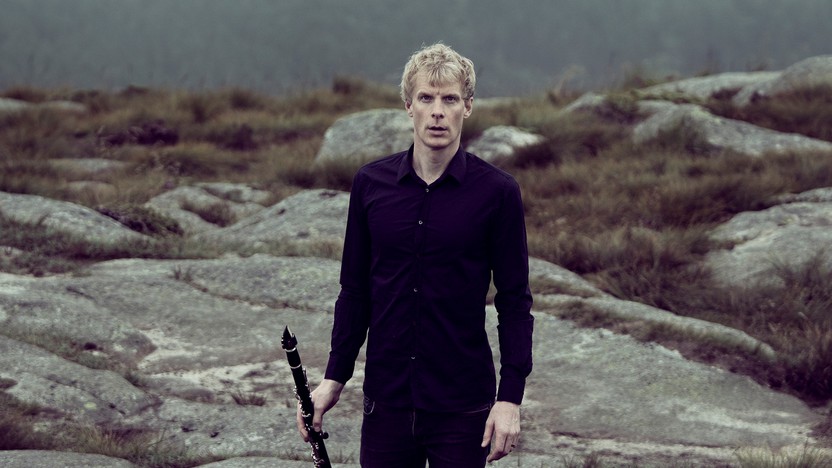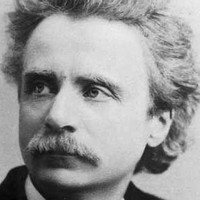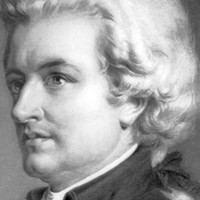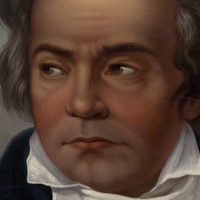Welcome Martin Fröst

Sponsored By
- October 11, 2014


Sponsored By

 Listen to Audio
Listen to Audio
For the bicentennial of Norway’s most distinguished writer, Ludvig Holberg (1684-1754), composer Edvard Grieg penned two tributes: a cantata for men’s voices, and a piano suite titled From Holberg’s Time. The next year, Grieg reworked his Baroque-inspired piano suite into an arrangement for string orchestra.
Decades before the trend of “neoclassical” music, Grieg’s “Suite in the Olden Style,” as he subtitled it, mined Baroque conventions that flourished during Holberg’s life. The Praeludium launches the suite with a galloping rhythm in the accompaniment, establishing an exciting, propulsive mood. The Sarabande, by contrast, steps patiently through the ornate, three-beat pulse of a dance that originated in Spain. The Gavotte, a muscular dance from France, begins with the customary lead-in of two strong beats. A contrasting section takes the form of a Musette, characterized by the droning accompaniments inspired by bagpipes.
The Air leaves dance forms aside for a long, singing melody in a melancholy minor key. The closing Rigaudon reflects a lively French dance style, while also delving into the Baroque style of the concerto grosso, with soloists—here a violin and viola—offsetting the texture of the full string sections.
Aaron Grad ©2014

(Duration: 30 min)
The music that Wolfgang Amadeus Mozart wrote for his friend Anton Stadler, a clarinetist and fellow freemason, was instrumental in establishing the clarinet as an equal to its older cousins in the woodwind family. Mozart’s first composition for Stadler was the “Kegelstatt” Trio from 1786, scored for clarinet, viola and piano. (Mozart played the viola part himself.) Next came a quintet for clarinet, two violins, viola and cello, completed in 1789. This work required a basset clarinet in the key of A, an instrument with a low-range extension designed by Stadler. Mozart went on to write Stadler a concerto featuring the same instrument, completed two months before the composer’s untimely death.
The Clarinet Concerto in A Major demonstrates Mozart’s keen understanding of the solo instrument’s range and agility. The tonal quality of the clarinet changes through its range, from the deep resonance of the bass notes, through the warm and hollow midrange of the chalumeau register, and up into the brilliant clarity of the highest octaves. At certain points in the fast opening movement, the soloist seems to play several opera characters engaged in dialogue, leaping from range to range; other times, a single scale or arpeggio journeys across all four octaves of the instrument’s compass.
In 1785, a critic wrote of Anton Stadler, “One would never have thought that a clarinet could imitate the human voice to such perfection.” Judging by the slow movement penned expressly for Stadler, Mozart surely agreed!
The finale has a bit of Haydn’s sense of humor in it, as in the playful held notes of the main theme that draw out unresolved tension. The episodic structure of the Rondo allows for fanciful and dramatic excursions, making each return to the familiar music all the more delightful.
Aaron Grad ©2023
 Listen to Audio
Listen to Audio
Ludwig van Beethoven, born into a musical family in the German city of Bonn, left his hometown for Vienna in November of 1792, at the age of 21. The aim of the trip, as his patron Count Ferdinand von Waldstein famously put it, was for the young composer to “receive Mozart’s spirit from Haydn’s hands.” The Elector of Bonn had released Beethoven from his performing and composing duties, with the expectation that he would study for a time with Haydn and then return to serve the court that had employed three generations of the Beethoven family.
Beethoven did study with Haydn, working mainly on counterpoint, but their short-lived tutelage ended when Haydn accepted an offer to spend a season in London, at which point he passed Beethoven off to another teacher. Beethoven’s period of study with Haydn had only a modest impact on his composing, but his chance to test the waters in the Vienna proved life-altering. Filling a void left by Mozart’s death in 1791, Beethoven was able to establish himself as the city’s premier keyboard virtuoso and improviser. He cut his ties with Bonn and pieced together enough work to embark on a freelance career.
Early on, Beethoven shied away from Haydn’s two signature genres: the symphony and the string quartet. Beethoven finally wrote his first quartets, a set of six grouped as Opus 18, between 1798 and 1800. As for symphonies, Beethoven made an attempt in 1795-96 (after hearing Haydn’s London Symphonies), but he did not complete one until 1800. He debuted the work on April 2 on his first benefit concert at the Burgtheater, the same venue where Mozart had presented his own popular concert series.
Beethoven’s First Symphony honors the Viennese tradition of Haydn and Mozart, and yet it also contains a germ of independence. The most striking departure comes in the very first sonority, an unstable chord that resolves away from the home key and only cycles back to the proper tonal center of C major after a drawn-out, tantalizing introduction. When the main theme enters in the new Allegro con brio tempo, it plays with a figure that repeatedly confirms the proper home key, as if to brush away the initial uncertainty.
In a sign of the interconnectivity that distinguishes all of Beethoven’s symphonies, the second movement starts with the same ascending interval (a perfect fourth) that was so central in the first movement. A distinguishing characteristic of this slow movement is its rich and independent writing for winds, with a scoring that includes trumpets and timpani.
The third movement, though labeled a minuet, is closer in spirit to the wild scherzos of the later symphonies. The contrasting trio section showcases Beethoven’s keen sense of humor, with scampering runs in the strings popping up between chorale phrases in the woodwinds. The finale brings this fledgling symphony full circle with another slow introduction. The violins test an ascending scale, adding a note at a time; when they reach the top of the octave, they launch a bright and hearty valediction.
— © Aaron Grad
Aaron Grad ©2017
This concert is part of our complete Beethoven symphony cycle.
Please note: The performance of Beethoven's First Symphony on Thursday, October 9 at Trinity Lutheran Church in Stillwater is currently SOLD OUT. Please select a different performance date from the remaining options above.

Metro Transit is pleased to offer free rides to all October SPCO concerts. If you have tickets to October concerts, watch your email for a concert reminder including a link to download your free Metro Transit pass.
Get driving directions and find nearby parking.
Find dining options close to the venue.
View seating charts to find out where you'll be seating.
Get driving directions and find nearby parking.
Find dining options close to the venue.
View seating charts to find out where you'll be seating.
